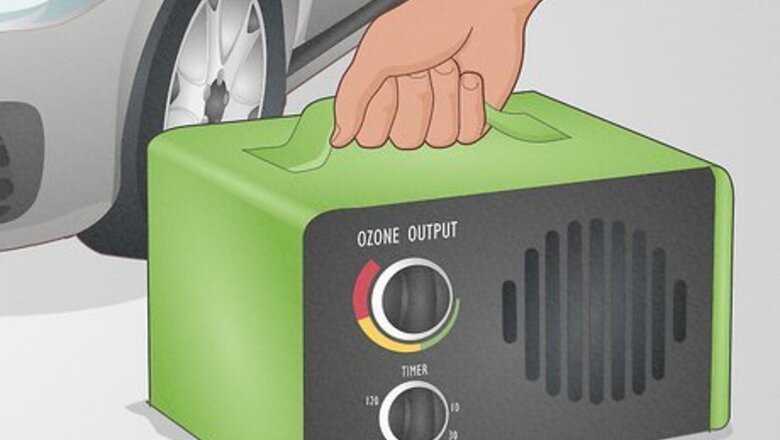
views
- Empty your vehicle of all objects, vacuum the car’s seats and floor, and wipe down any dirty surfaces with a wet wipe before starting.
- Set the ozone generator in your vehicle or feed the duct through the window (depending on the generator type). Run the generator for at least 30 minutes.
- After running the ozone generator, air the vehicle out for 2-3 days to avoid exposing yourself to the toxic ozone fumes.
Cleaning & Prepping Your Vehicle
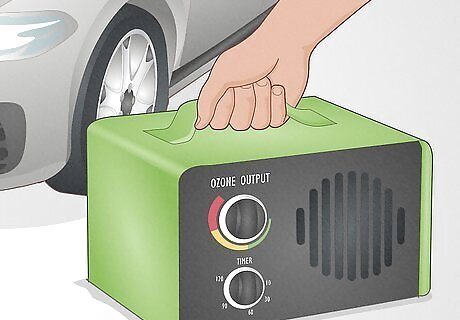
Rent or purchase an ozone generator. Rent an ozone generator from a construction supply or home improvement store, or buy one if you may need to remove stubborn odors in the future. Ozone generators aren't super expensive and usually cost less than $100. There are two types of ozone generator—corona discharge generators and UV light generators. The corona discharge generators are stronger and use a duct to pump ozone into a space. UV light generators are just left in an enclosed space. Corona discharge generators are stronger than UV ozone generators, but they may be overkill for a vehicle. The corona discharge generators are ideal for cleansing an entire home, so go with UV to keep things simple. Ozone generators are rated by mg/h, which is how much ozone they produce. A good rule of thumb is 1,000 mg/h per 100 sq ft (9.3 m). Most sedans are around 100 sq ft (9.3 m), while bigger SUVs can get up to 200 sq ft (19 m).
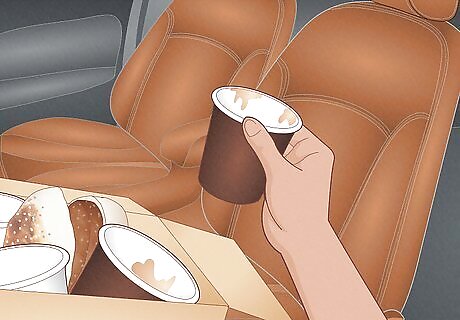
Clean your vehicle thoroughly and remove any trash. Ozone is toxic. It won’t damage the interior of your car, but it may render things like water bottles unusable. As a result, take everything out of the car to keep it safe from the ozone. Leave anything that may be harboring intense odors that you don’t mind potentially warping. Floor mats, for example, are probably best left in the vehicle.
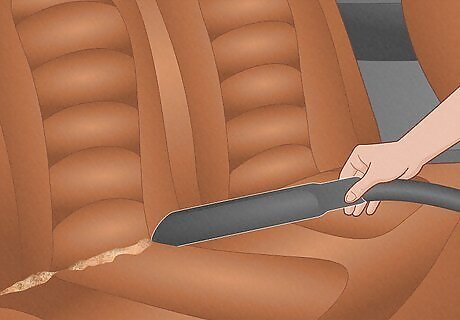
Vacuum the car and wipe off all of the hard surfaces. While ozone treatments will remove odors, they won’t remove the sources of those orders. So, any food particles or gunk that’s contributing to bad smells in the vehicle will just start to smell again later. Vacuum your vehicle thoroughly and use wet wipes to scrub down any hard surfaces or dashboards. You don’t need to break out any deodorizing materials or deep cleaning tools; the ozone generator will do all of that for you.
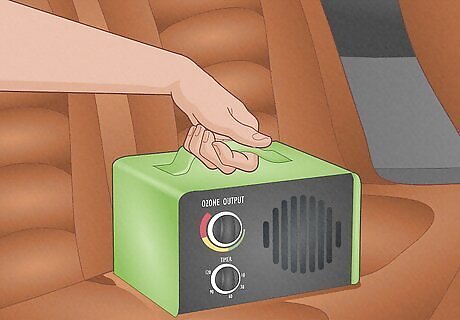
Put the generator in the car or connect the flexible duct. Read your ozone generator’s instructions to determine how you set it up. For most UV generators, just set the generator anywhere in the vehicle, like the middle of the back seat. If you have a generator that uses a duct, connect the duct hose to the generator and set the machine down next to the vehicle outside. If you have a duct, feed the duct tubing through a cracked window and into the vehicle.
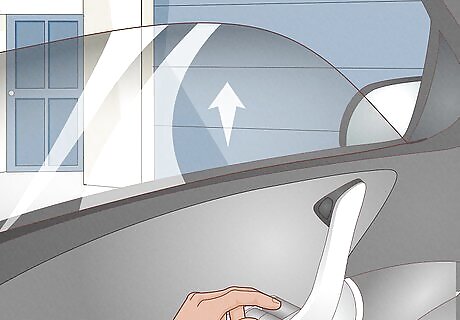
Close the windows and seal off any openings. If you’re setting the generator in the vehicle, just close all of the windows and shut the doors to seal the car. If you have a duct going into a window, you’ve got a little extra work ahead of you. Seal the cracked window around the duct with cardboard, packing tape, and/or plastic wrap. If your generator’s instruction manual tells you to never leave the generator in an enclosed space, do not seal the area around the duct and make sure one of the windows is cracked.
Running the Ozone Generator
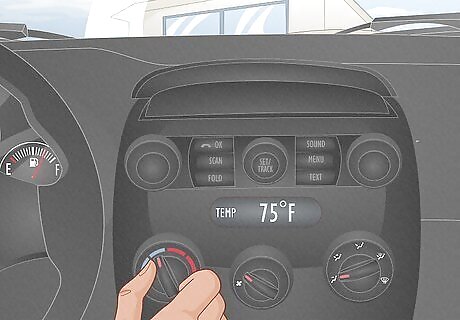
Turn the vehicle on and set the climate to 75 °F (24 °C). Ozone will circulate more evenly if the temperature isn’t too extreme. If it’s 60–80 °F (16–27 °C) outside already, your vehicle’s interior should be fine. If it’s hot or cold out though, turn your vehicle on and set the heat or air conditioning to 75 °F (24 °C). Once the interior of your vehicle reaches this temperature, shut the car off.
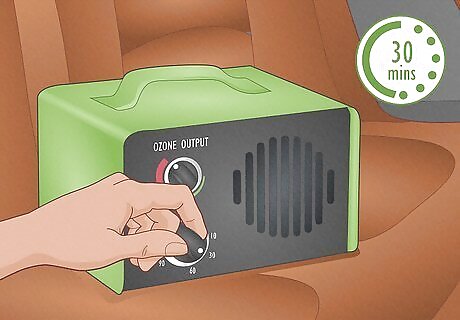
Run the ozone generator at full power for 30 minutes. Press the power button on the ozone generator and turn the dial to the highest setting. Let the ozone generator run on its own for at least 30 minutes, and no more than 2 hours. Warning: Ozone is toxic. Do not leave any pets or people in the vehicle while the ozone generator is running. Unless you’re removing some seriously stubborn odors, you shouldn’t need more than 30 minutes to cleanse your vehicle. As the generator runs, it will generate toxic O3 (this is the “ozone”). O3 is just 3 oxygen molecules. O2 is the air that we breathe, so there’s a leftover oxygen molecule when you introduce ozone into the air. That extra molecule will bind with anything floating around in the air to remove odors from your car.
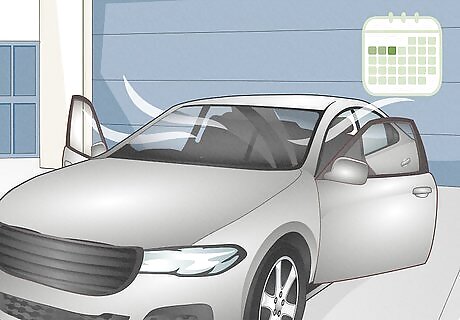
Air out the vehicle for 2-3 days until the ozone odor goes away. Once your time is up, open the vehicle’s doors and shut the generator off. Leave your vehicle alone for at least 2-3 days if possible. Ozone smells like a funky version of chlorine bleach, so once that odor is gone, you’re good to go. Residual ozone won’t be super dangerous so long as there’s clear air around it, but it’s still best to not breathe it in if you don’t have to. Realistically, the longer you can wait, the better. Do not enter the vehicle for the first 4-8 hours that it’s airing out. It takes time for all of those O3 particles to bind to something, and you don’t want to breathe it in. If you still smell the original bad odor in your vehicle, repeat this process again.










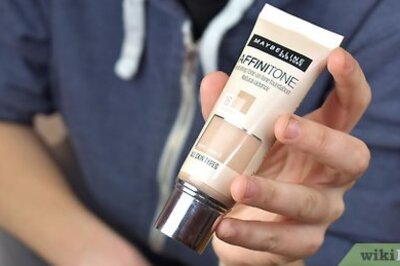






Comments
0 comment